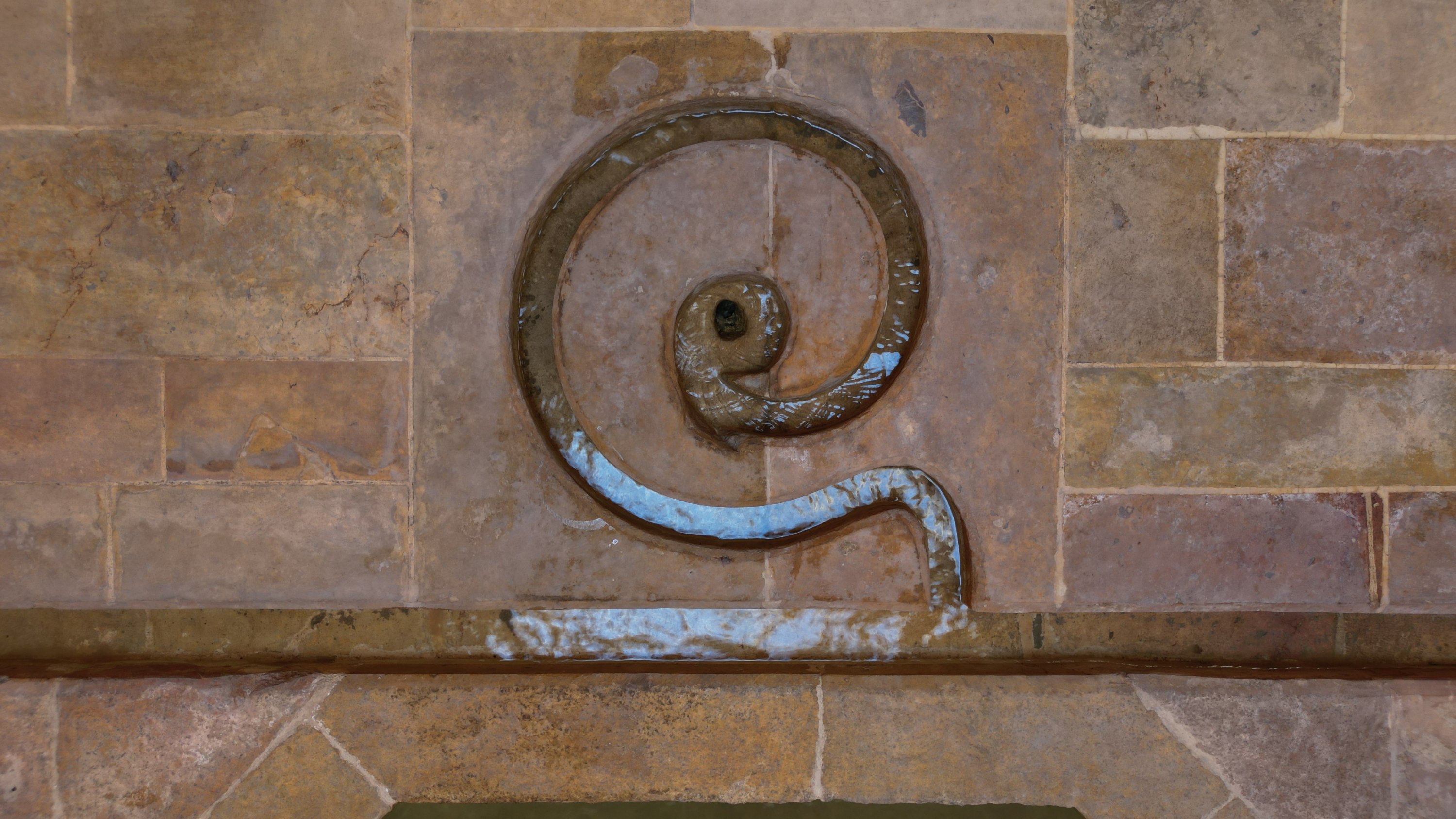© Turkuvaz Haberleşme ve Yayıncılık 2024
The hospital section of the Divriği Great Mosque and Hospital, a Seljuk-era structure in the Divriği district of Sivas, central Türkiye, attracts attention for its historical significance in treating mentally ill patients.
The sound of water from specially designed pools, combined with the building's acoustic design, resonates once again, providing healing to patients, while the call to prayer recited in the acoustic section offers tranquility to visitors.
Built in 1228 by Ahmed Shah, son of Suleiman Shah, and his wife Melike Turan Melek during the Mengücek Beylik period, the Divriği Great Mosque and Hospital reopened for worship and visitation in May after a nine-year restoration.
Its architectural features amaze visitors, particularly the doors and columns showcasing exquisite stone craftsmanship by artisans from Ahlat and Tbilisi.
The complex, consisting of a mosque and a hospital, is unique in the Islamic world. Ahlatlı Hurrem Shah, the architect and sculptor of the entrance gates, is recognized for his innovative motifs and architectural genius, particularly with the design of the paradise gate on the qibla door, making him a representative of Islamic Sufism in the 12th-13th centuries.
Designated a UNESCO World Heritage site in 1985, the structure features thousands of motifs that are asymmetrical yet appear symmetrical from afar, symbolizing harmony and balance in the universe.
Its architectural style, decorative elements, and balanced design place it among the remarkable structures worldwide.
Evliya Çelebi visited and described it, saying, "In praise, tongues are tied, and pens break," and referred to it as "The Alhambra of Anatolia."

The mosque and hospital complex, unique in Türkiye, is known for its hospital section, established for the treatment of mentally ill patients. A water circulation system, designed with symmetry, runs through the center of the structure.
This section, which had not received water for many years before restoration, has been restored to its original state. The sound of water from the newly activated pool provides peace and healing when listened to in silence.
This system was used to bring calm to mentally ill patients undergoing treatment, and the large iwans in the hospital have acoustic properties designed by the architect, sending different tonal sounds to the patients' rooms based on their conditions.
The inward and outward stone carvings on the walls of the physicians’ examination rooms were also used to assess the severity of patients' illnesses.
Nail Ayan, muezzin of the Divriği Great Mosque and guide of the structure, states: "The hospital has a dome illuminated by a lantern resting on four main columns; two are octagonal, and the other two are circular. Kufic inscriptions featuring the names of Allah and Muhammad adorn the tops of these columns. While the hospital was planned for all patients, its primary purpose was the treatment of mental and neurological illnesses."
"While most countries burned and chained mental patients, our ancestors built a hospital to treat them," said Ayan.
"The large iwans were used as a stage. The main goal of constructing this space was to achieve acoustics, and this was successfully accomplished. The bass and treble of a sound were adjusted on that stage. The adjusted sound, along with healing verses from the Quran and certain Sufi music, combined with the gentle flow of water from the fountains in the pool, provided treatment for patients resting in isolation rooms," he adds.
"Interestingly, sounds from the Quran, music and water manifest differently in the rooms; some resonate bass while others are treble, indicating distribution based on the patient's mental health condition. Patients find healing by listening to these sounds."
He notes: "For many years, this pool was inactive. Our restoration team worked tirelessly to reactivate it."
The name of chief architect Ahlatlı Hurrem Shah is inscribed on the upper section of the iwans. It is said that while inscribing his name, he prayed for the structure to withstand the test of time, hoping that if it collapsed, his name would be the first to fall. Ayan explains: "Ahlatlı Hurrem Shah wrote his name simply in the corner of the grand iwans."
He continues: "He wished, 'If this hospital collapses, let my name fall first. My name's significance is lost if the structure I created is destined to collapse centuries later.' His simple prayer for this work is: 'O Lord, let my humble creation witness the Day of Judgment.' Now, like us, 13 generations have seen this structure. May future generations cherish this masterpiece."
Visitors to the mosque can also experience the acoustic features, as "sela" is recited here. The call to prayer, recited by Nail Ayan as he walks around the four corners of the iwans, enchants listeners.
